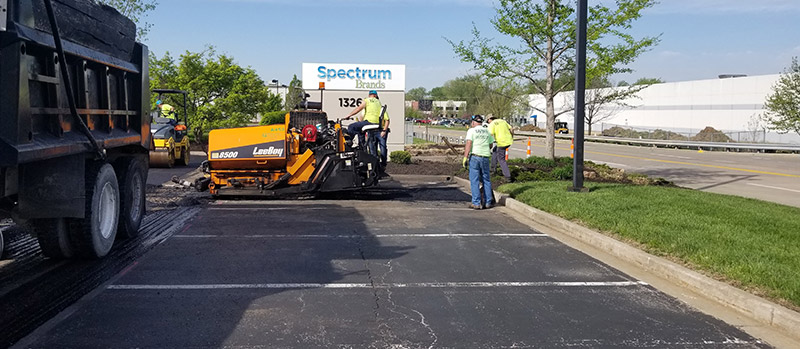Little Known Facts About A1 Professional Asphalt & Sealing Llc.
Little Known Facts About A1 Professional Asphalt & Sealing Llc.
Blog Article
Unknown Facts About A1 Professional Asphalt & Sealing Llc
Table of ContentsA1 Professional Asphalt & Sealing Llc for BeginnersThe Ultimate Guide To A1 Professional Asphalt & Sealing LlcTop Guidelines Of A1 Professional Asphalt & Sealing LlcUnknown Facts About A1 Professional Asphalt & Sealing LlcA1 Professional Asphalt & Sealing Llc - The Facts

The oil in a vehicle engine is not just oil. The REOB consists of all the additives that were in the waste oil as well as the wear metals from the engine (generally iron and copper).
By making numerous blends using various REOB examples and various asphalt binders, the variants mostly can be balanced out. A number of States supplied samples of well-known REOB make-up to TFHRC scientists, that evaluated the examples to compare the portion of included (recognized) REOB to the found (checked) quantity. The evaluations showed an equivalent percentage of included and found REOB.
More About A1 Professional Asphalt & Sealing Llc
They received a frustrating response. The TFHRC scientists assessed 1,532 samples from 40 States, one Canadian province, and two Government Lands Freeway divisions. They assessed each example twiceamounting to greater than 3,000 analyses. None of those States recognized that the asphalt they were acquiring consisted of REOB. One State urged its samples had no REOB.
Of the 1,532 samples evaluated, 12 percent included REOB, and some included considerably high levels of it at 1020 percent. The highest degree was 34 percent in an example from Texas, which TxDOT had used in a patching substance. This screening also disclosed the existence of phosphoric acid in 11 percent of the examples, and 2 percent contained ground tire rubber.
2 years back at TRB's yearly meeting, the Federal researchers held an REOB workshop and provided the searchings for of their laboratory examinations to a standing room-only group. Some agencies do not especially outlaw REOB, they do impose physical examinations that avert its useeffectively a ban. Others do not ban it by spec, yet have agreements with asphalt vendors to prevent the use of REOB
A1 Professional Asphalt & Sealing Llc Can Be Fun For Everyone
A handful do permit REOB, some within specific restrictions. Ohio and Texas limit levels to less than 5 percent of the asphalt. To create a trusted test technique that all States can use, the TFHRC scientists set up a round-robin test plan. The participants are 11 State freeway companies (Illinois, Massachusetts, Minnesota, Mississippi, Montana, North Carolina, Oklahoma, South Carolina, Texas, Vermont, and Wyoming), 2 independent screening labs, the Ministry of Transport in Ontario, Queen's College in Ontario, and an Ontario paving professional.
In overall, the researchers prepared and delivered 720 blends. The participants are evaluating the examples separately using the standards provided by the TFHRC researchers. The round-robin screening is nearly completed, and TFHRC is in the process of gathering the outcomes. The result will be a proposed AASHTO test method that any kind of State can embrace and utilize (what is cold asphalt?).
The pavement with REOB, which is situated 0.6 mile (1 kilometer) from the pavement without REOB, has identical subgrade, traffic thickness, and climate. Nevertheless, the section of Highway655 with 5 to 10 percent REOB showed significant splitting. In this example, the visibility of REOB was the recognized root cause of splitting at a reduced temperature levels.
"In our experience in copyright, also small quantities of 23 percent can be a trouble." An area of examination sidewalk in Minnesota (MN1-4) discovered to consist of REOB additionally cracked too soon. The pavement executed well for the initial 3 to 4 years, yet then began to fracture. This sidewalk is also based on reduced temperature levels.
Indicators on A1 Professional Asphalt & Sealing Llc You Need To Know
The examinations were not extensive, but they revealed that at levels of 6 percent or even more, the tensile toughness of the asphalt went down significantly. At a level of 3.5 percent REOB, the variant in the physical examination methods was above the result of REOB. Actually, it was hard for researchers to evaluate whether REOB existed.

One binder criterion thought about is the difference between the reduced temperature important specification temperature for stiffness (S) in the flexing beam rheometer and the flexing light beam rheometer creep slope (m-value) kept in mind as Tcritical. Two independent research study teams, one from AASHTO and the other from the Asphalt Institute, wrapped up that even more study is needed on the usage of REOB in asphalt.
Formerly, all asphalt testing gauged engineering residential or commercial properties such as stiffness. These examinations do not reveal what materials had been added to the asphalt.

Our A1 Professional Asphalt & Sealing Llc PDFs
These results demonstrate there are weaknesses in the standardized design screening protocols that may be manipulated. The manufacturer might have a financial benefit and Continue the item passes all the standard tests, yet the product may not be helpful to making certain lasting efficiency. To resolve this problem and the expansion of brand-new asphalt ingredients and extenders, TFHRC is beginning a research program to use handheld spectroscopic devices, x-ray fluorescence spectroscopy, and Fourier transform infrared spectroscopy to make it possible for evaluations to be carried out in the area as opposed to needing to take samples back to the laboratory.
Report this page